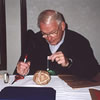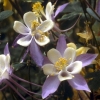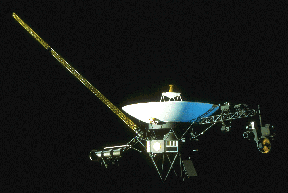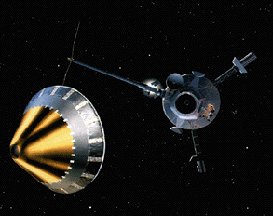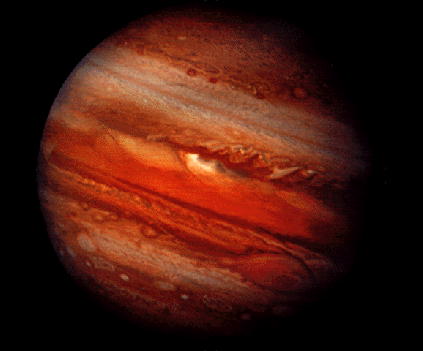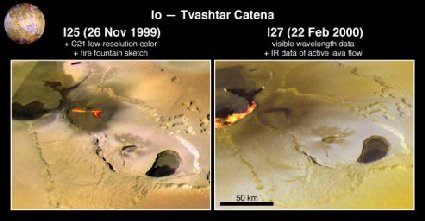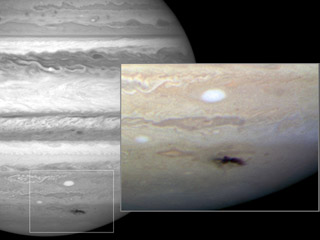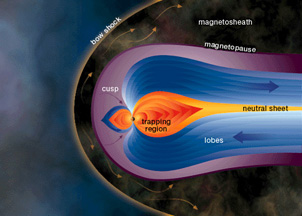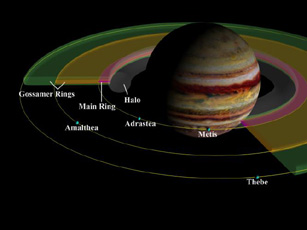Missions to Jupiter
| Mission | Country | Launch Date | Arrival Date | Type | Encounter Characteristics |
|---|---|---|---|---|---|
| Pioneer 11 | USA | April 6, 1973 | September 1, 1979 | Flyby | Returned detailed pictures of Jupiter and Jupiter's Great Red Spot. |
| Voyager 1 | USA | September 5, 1977 | November 13, 1980 | Flyby | Returned photographs and information on Jupiter's many moons. |
| Voyager 2 | USA | August 20, 1977 | August 26, 1981 | Flyby | Showed that Jupiter's Great Red Spot is really a complex storm, and that Io, one of Jupiter's moons, has active volcanism. |
| Galileo | USA & Europe | October18, 1989 | February 10, 1990 | Orbiter/Probe | The Galileo Probe successfully descended into Jupiter's atmosphere on December 7,1995. Galileo Orbiter successfully entered orbit well above the cloud tops of Jupiter on December 7, 1995 and is currently observing the Jupiter system. |


